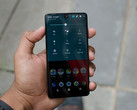The Android OS, for all its perks, has a major pitfall. Unlike Apple's iOS ecosystem that's entirely controlled by the Cupertino-based company, the fragmented nature of the Android world lends itself to policies entirely dependent on the whims of individual OEMs. It isn't all bad, however, as it keeps the scene innovative and diverse, but that’s about as far as perks go—a myriad of issues being direct products of that lack of uniformity.
One such issue is that of software updates. While iOS devices receive software updates for up to five years, their Android counterparts usually get just one, with flagships sometimes going as high as two. Even that isn’t assured anymore. Some OEMs have a lackluster stance on updates—the LG V20, for example, was a flagship released towards the end of 2016, on Android 7.0 Nougat, but is still yet to receive any major update, not even the one to 7.1 Nougat.
Android Oreo was released way back in August last year, so one would expect most devices to be running on that version of the OS. One would expect wrong. Distribution numbers for the various versions of Android show that Oreo currently has about a 1% market share, which is a rather disturbing statistic. It gets worse. Six months after the release of Android Oreo, devices are still being launch on Nougat.
The Nokia 6 (2018) was launched towards the end of January on Nougat, but received the update to Oreo days after, with some users receiving the OTA on first boot. The Redmi Note 5 Pro was released last week and also on Nougat. Being a Xiaomi device, it's a bit pointless to expect a tricky Oreo update anytime soon, as the company's track record with major updates leaves a lot to be desired.
There are, of course, reasons for shenanigans like this.
Some OEMs promise two major updates for their devices but utilize this loophole to bypass actual implementation. OnePlus comes to mind. The company released the OnePlus 5T in November last year, with the device running on Android Nougat out of the box. Android Oreo was already months old at that point, so it's a bit hard to believe any excuses the company may come up with. It's a lot likelier that the device was launched on Nougat so the update to Oreo counts as a major update of its own. That would effectively ensure that the device's update life ends with the release of Android P when it is released in August 2018. Two major updates provided, albeit in the span of one year. Mission accomplished.
It's not all just silly conspiracies, either, as it makes sense from a business perspective. Supporting a device for just one year means that the company's next generation of devices enjoy more sales, as those who bought devices from the last generation are pushed to make the upgrade if they harbor any hopes of getting Android Q.
There's also the issue of Project Treble. Google's new feature is mandatory for devices launched on Android Oreo. Devices updated from Nougat to Oreo may also receive the feature but that depends solely on the OEM. Companies like Huawei and Essential have implemented the feature with their Oreo updates but they're lone warriors in a cold, obstinate horde of rivals. Releasing devices on Nougat bypasses the need for Treble implementation—and we believe that to be a factor in the Nokia 6 (2018)'s case.
The actual usefulness of Treble itself is, perhaps, a bit overblown. Designed to offer a means of implementing update rollouts without going through the hassles of vendor and carrier meddling, the feature definitely has its uses. While we do not believe it will improve the current state of updates—those ultimately have to be decided upon by the OEM—it does, however, rejuvenate the custom ROM scene. Devices with Treble support are able to run generic AOSP images, which is game-changing for community development.
Both reasons—Treble and update lifespans—are major indications of the callousness with which users of Android devices are treated by OEMs. It's understandable for devices launched a month or two after the release of a new version of Android to run on the former iteration of the OS—it's a bit hard to develop a take on a newly launched version of the OS so soon after its release, we admit (and that's ignoring the fact that OEMs already have images of the OS before it's even launched). Doing so five or six months after, however, reeks of undisguised disdain towards end users.
We can only hope all of this ends with the releases of new devices at MWC—devices that we fully expect to be launched on Android Oreo. We wouldn't count on it, though—for one, there are already rumors that the upcoming Mi Max 3 will be launched on Nougat.
The Android OS is one that offers a number of perks over its iOS rival, but if long-term software updates are a major factor in the buying decision, users are definitely better off with the Apple-regulated ecosystem.


 Deutsch
Deutsch English
English Español
Español Français
Français Italiano
Italiano Nederlands
Nederlands Polski
Polski Português
Português Русский
Русский Türkçe
Türkçe Svenska
Svenska Chinese
Chinese Magyar
Magyar












